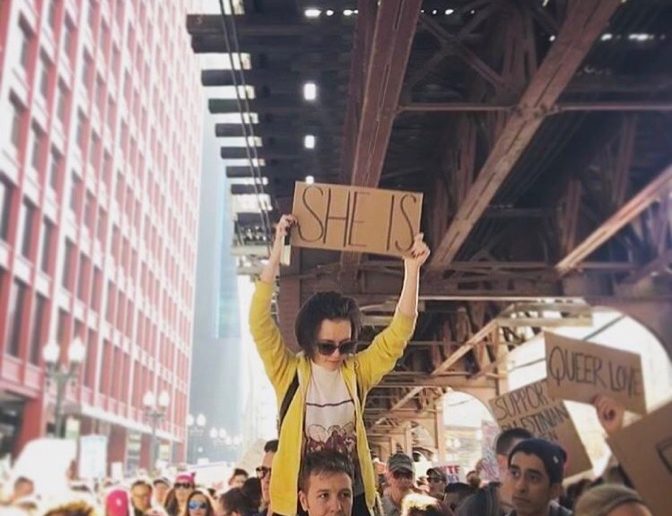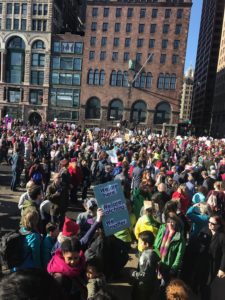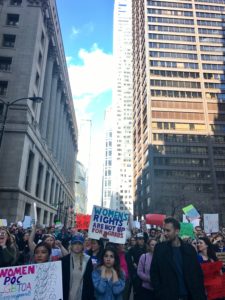Nearly 250,000 demonstrators took to the streets of Chicago to march for a variety of reasons on January 21. The demonstration, originally organized to be a march from Grant Park to Federal Plaza, turned into a rally once demonstrators reached maximum occupancy levels as they flooded into Grant Park and nearby streets.
While the march’s Facebook page originally projected a crowd of 20,000 participants, that number quickly climbed to 50,000. According to reports in the Chicago Tribune and Chicago Women’s March spokesman Bryan Goettel, the demonstration had roughly 250,00 participants.
The timing of the march stalled most school-sponsored trips. Erin Hoffman, the director of the Department of Intercultural Relations said the College aims to support all student groups in their participation in political activism. Hoffman said the department’s main goal is to “help students think through activism” and act as a resource for students who want to participate in protests. Working as a voice to guide students rather than an advocate for either side, the Department of Intercultural Relations seeks to provide “safety and planning tips” for students who want to engage in activism.
While at least 35 students from Lake Forest College had a presence at the march, there were no club-sponsored trips to the demonstration. Miwa Lee ’18, vice president of the United Black Association, said she thinks the timing made it difficult to coordinate any group to travel to Chicago for the demonstration. The march “took place early in the semester before our meetings started up again,” Lee said. Club adviser Judy Dozier, associate professor of English and chair of African American studies, encouraged members to go independently if students could not go as a collective group, Lee said.
One widely shared image from the march was a photo of an African American woman holding up a sign that read “white women voted for Trump” in reference to exit polls that showed 53 percent of white women did so. Lee echoed the woman’s sentiment, saying that while she saw value in the march, she felt the demonstration “lost its original purpose of being intersectional,” which was only “natural,” especially “with the march having so many people, there were bound to be participants who weren’t for every cause the march stood for, especially when it came to race and gender identity.”
While the march presented Lee with conflicts about the demonstrators’ purpose, United Black Association President Rapheal Mathis ’17 believes the atmosphere among Lake Forest College students who went to the march demonstrated campus engagement. Mathis said the election has “seen [the College] respond in several ways.” He maintained that regardless of affiliation, Lake Forest College has always had a sense of involvement in the political sphere, “whether it’s the school hosting it, or student groups.”
Written for Journalism 320
Images courtesy of Kalina Sawyer ’18





